Field 2 Fork
Caring for your harvested game, cooking it, and sharing delicious dishes with friends and family is an important part of any hunting experience
Caring for your harvested game, cooking it, and sharing delicious dishes with friends and family is an important part of any hunting experience

By Teresa Milner

You kill it, you eat it. This should be the rule in any hunting and fishing household. Handling your game correctly in the field and having a few good recipes makes the whole hunting experience even more enjoyable. It’s also the right thing to do. In his influential book Beyond Fair Chase, author Jim Posewitz wrote: “In the beginning, humans hunted to live. Today some still live to hunt. Originally it was a matter of survival to utilize what was killed. Today, using what is killed is essential to ethical hunting.” Following are some tips for proper game care and some easy recipes that just might become standards in your culinary repertoire.
“The key to any good meal starts from the time you first get a harvested bird in your hands,” says Pat Kehoe, director of international partnerships for Ducks Unlimited Canada. Taking care of your wild game after harvest helps improve the texture and flavor of the meat, he explains. “If you take care of your game, you’ll end up with a much better final product.”
The three concepts to remember when taking care of any wild game are cool, dry, and clean. Keeping birds cool should be your number-one priority in the field. “Don’t pile up your birds during a hunt,” Kehoe says. “The bodies exchange heat, which prevents them from cooling down.” Make time during the day to care for your ducks or geese properly. Don’t wait until sunset to take care of them. Kehoe recommends using a game strap to hang birds in your boat or blind. It will keep the birds off the ground and help the cooling process. Gutting birds also accelerates cooling. Kehoe says another key piece of equipment is a cooler with ice, especially on early season hunts or in areas with warm weather. “Use an ice chest with a layer of ice on the bottom,” he says. He recommends using a rack to keep the birds from coming in contact with the ice. “Keeping birds dry helps during processing. Don’t let them sit in melted ice water all day.”
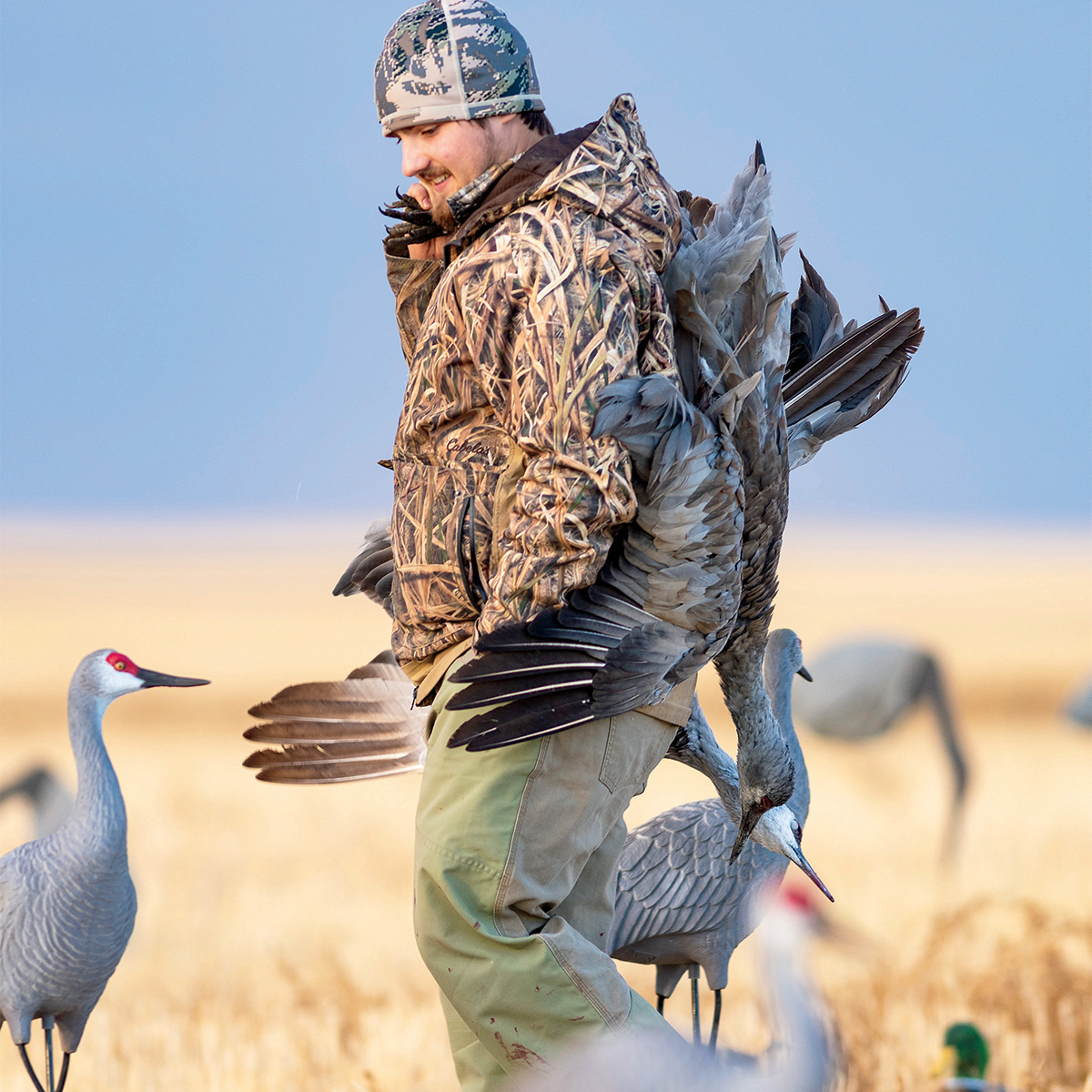
Kehoe says it is crucial to know how to identify waterfowl in flight and only shoot the birds that you intend to eat. He says it’s also important to always follow the game laws in your area when field dressing ducks, and to retain the parts you need to verify a bird’s species and sex. Check the regulations in your area for more details about legally transporting harvested waterfowl.
Treating wild game correctly and only harvesting animals you intend to eat perpetuates the integrity of hunters. Killing just for the sake of killing is illegal, it isn’t respectful to the resource, and it gives hunters a bad reputation.
While only keeping and eating the breast meat is common, Kehoe says other parts of ducks and geese can be used too. “Legs are delicious when prepared correctly,” he says. You can also keep hearts, gizzards, and livers. Fat can be rendered from the skin. Stock can be made from the cooked carcass to be used later in soups.
Kehoe believes that knowing the species and quality of the birds you have harvested is one of the keys to preparing them for the table. He plucks many of his birds, because leaving the skin on provides better flavor while cooking. But to him, stronger tasting ducks, such as divers and sea ducks, taste best when skinned. “Skin those birds and get the fat off,” he recommends. “Often the gamey flavor people associate with ducks is in the fat. It’s a product of their diet.” A duck that eats shellfish or invertebrates tends to be stronger tasting than a wood duck or mallard that feeds on grain and acorns.
Plucking is tedious and time consuming, but for great cooks like Kehoe, it’s an important way to get the most flavor from a duck. If you pluck a lot of birds each year, a motorized plucker can be a great investment. Scalding the birds in hot water (about 130 degrees) helps loosen up feathers for more efficient plucking.
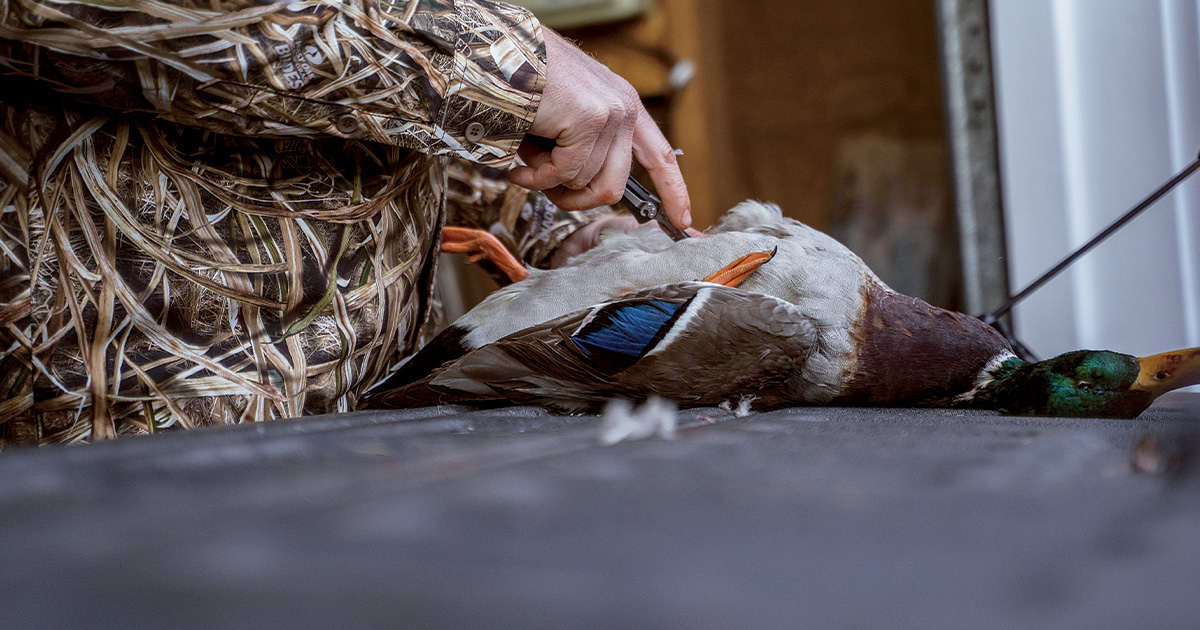
Keep your harvested birds cool, dry, and clean in the field. Once you’re home, processing them properly and promptly will help ensure good flavor and texture.
Freezing waterfowl helps you enjoy the harvest all year long. Scott Leysath, the cooking columnist for Ducks Unlimited magazine, uses a vacuum-sealer to help preserve wild game in the freezer. “A vacuum-sealer keeps the air away from the meat and makes it last a lot longer,” he says. He puts breasts or legs on a sheet pan sprayed with some oil and freezes them first to reduce moisture. Then he vacuum-seals the parts for long-term storage. Leysath recommends freezing the breasts separately from the legs because they’ll cook differently.
Leysath swears by the brine (a mixture of water, salt, and other spices), which improves the flavor of waterfowl. “The brine removes the blood in waterfowl meat. The liquid also helps break down the sinewy legs, adds moisture, and enhances the flavor,” he explains. Leysath recommends soaking meat in a brine for at least 12 hours. Use a commercial brine from your favorite outdoor store or prepare your own using the recipe below.
INGREDIENTS
DIRECTIONS
Heat 2 cups of the water in a saucepan over medium heat. Add salt, brown sugar, and pickling spices. Stir until the salt is dissolved. Add this mixture to the remaining water and cool completely in the refrigerator for at least 3 hours before soaking the duck or goose meat.
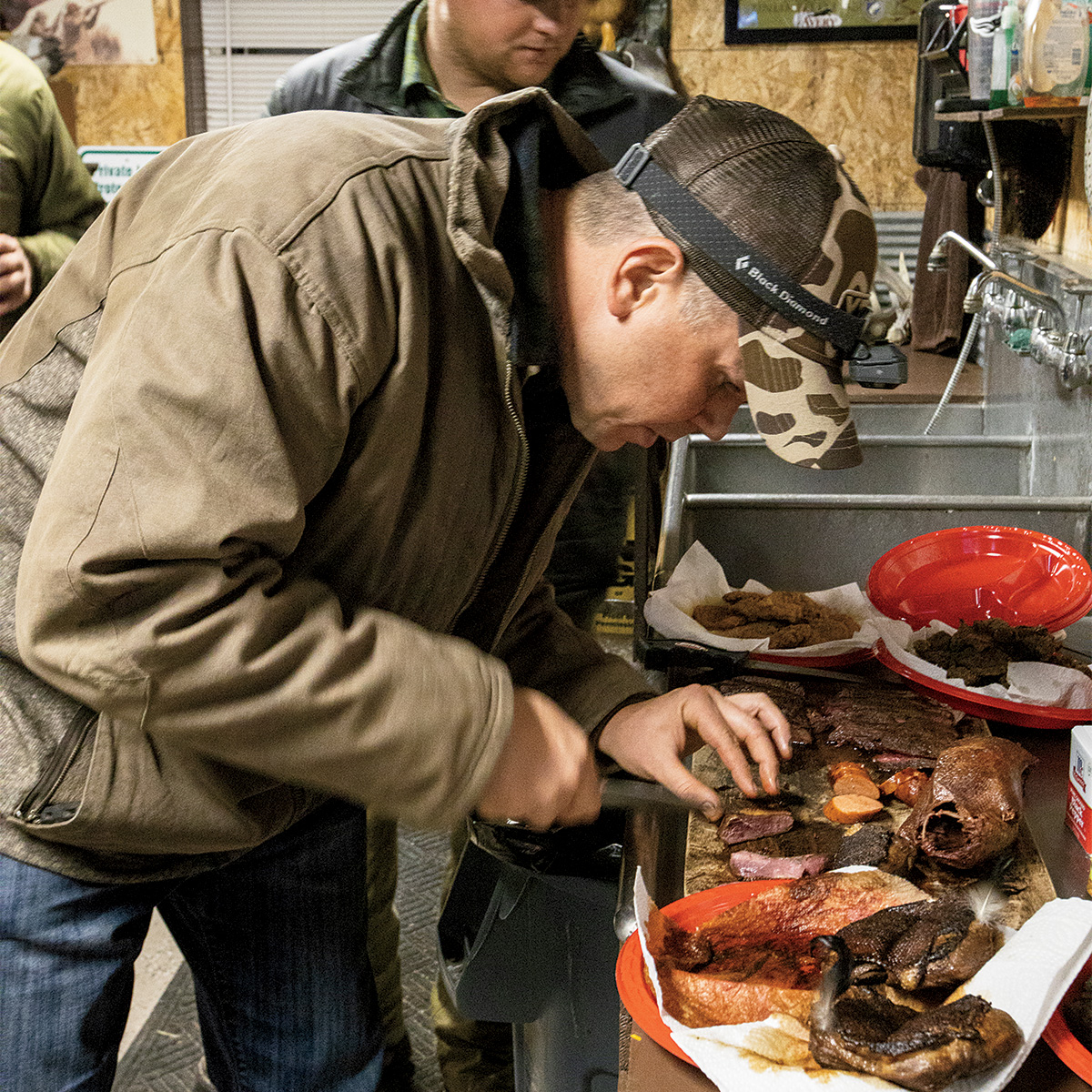
For the best flavor, don’t overcook your waterfowl. In most recipes, about medium rare is best. Also, eat it promptly after cooking, before it has time to cool.
How you prepare ducks or other waterfowl is entirely your choice. Grilled, fried, roasted, slow-cooked . . . the options are limitless and delicious. But there’s one thing all great wild-game chefs agree on: don’t overcook the meat. “The biggest mistake that home cooks make is that they overcook their ducks and geese,” Leysath says. “Overcooking makes them more gamey, not less gamey. Give yourself permission to cook them less and you’ll wind up loving the taste more.”
Kehoe agrees. “I never cook duck much past medium rare,” he says. “The flavor and texture is just so much better.” He also says eating wild birds fairly soon after cooking is best, because the flavor gets stronger as the meat cools.
Kehoe says the important thing to remember is that wild game is still just meat. “Don’t get hung up on recipes specific to ducks and geese. There’s nothing magical about duck or goose meat . . . it’s still just meat,” he explains. He advises substituting wild waterfowl for domestic meat in recipes you already love. Use duck or goose in your favorite stir-fry, as taco filling, or in stews, for example. And Kehoe says not to forget about other game birds, like sandhill cranes. They make delicious table fare as well.
Leysath wants his duck to taste like duck. “Disguising the flavor with bacon, cream cheese, or strong marinades tastes great, but it doesn’t taste like duck,” he says. “And then, what’s the point?” Leysath prefers simple recipes with fresh, crisp ingredients. His go-to recipe is duck with a balsamic berry sauce. He brines his boneless duck breasts overnight and then cooks them hot and fast in the skillet.
“After cooking, remove the breasts and put a splash of balsamic vinegar into the pan. Add some berry preserves, about a teaspoon, to the sauce and let it reduce,” he says. “Slice the duck breast, spoon the sauce with some fresh berries over the meat, and serve.”
One of Kehoe’s favorite duck dishes is also simple—a plucked bird cooked on a simple charcoal grill for 15 to 20 minutes.
“Getting people to enjoy wild game with us is part of the fun,” Leysath says. Treat your game properly in the field and in the kitchen. It’s the ethical and tasty thing to do. Soon everyone will want another invitation to dinner!
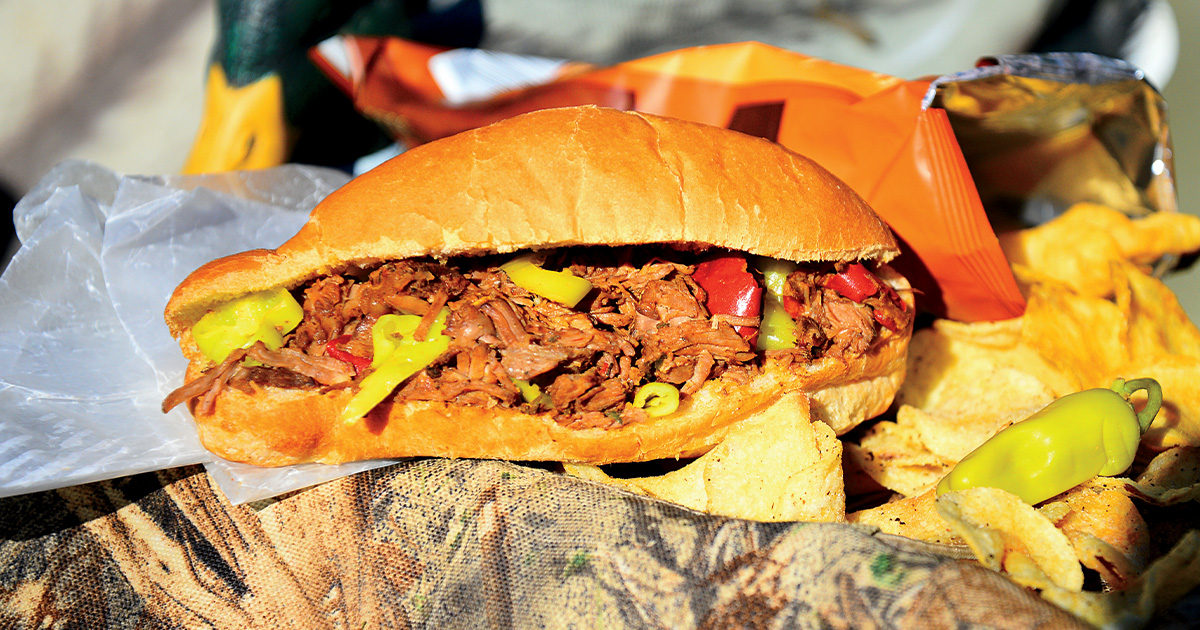
To make the filling for these hearty sandwiches, you slow-cook seasoned whole ducks or breast fillets. Once the meat is cooled and shredded, its taste and texture will remind you of pulled pork.
“Duck camp is no place for cute little sandwiches or a tablespoon of meat on a cracker, especially after a long day in the marsh,” Leysath says. That’s why he likes to prepare these hearty sandwiches for hungry hunters.
INGREDIENTS
DIRECTIONS
[STEP 1] In a small bowl or bag, combine kosher salt, black pepper, garlic powder, and paprika. Liberally coat the duck with this mixture. Cover and refrigerate for at least 1 hour, but preferably for 6 or more hours.
[STEP 2] Heat the oil in a heavy-duty pot, such as a Dutch oven, over medium-high heat. Add the duck and brown evenly on all sides. Add the onion and cook for an additional 5 minutes. Mix in Italian seasoning, crushed red pepper, and garlic. Cook for 2 minutes. Add the red wine vinegar and stir to loosen the bits stuck to the bottom of the pot. Add the beef stock. Bring to a boil. Reduce the heat to low, cover, and simmer for several hours until the meat pulls apart easily.
[STEP 3] Remove the duck from the pot and cool completely. Pull the meat off the bones or shred the breasts into bite-sized pieces. Strain the liquid from the pot and add it to the pulled meat.
[STEP 4] To serve, reheat the meat and liquid in a skillet or Dutch oven. Add the pepperoncini and peppers and bring to serving temperature. Spoon the mixture onto rolls.
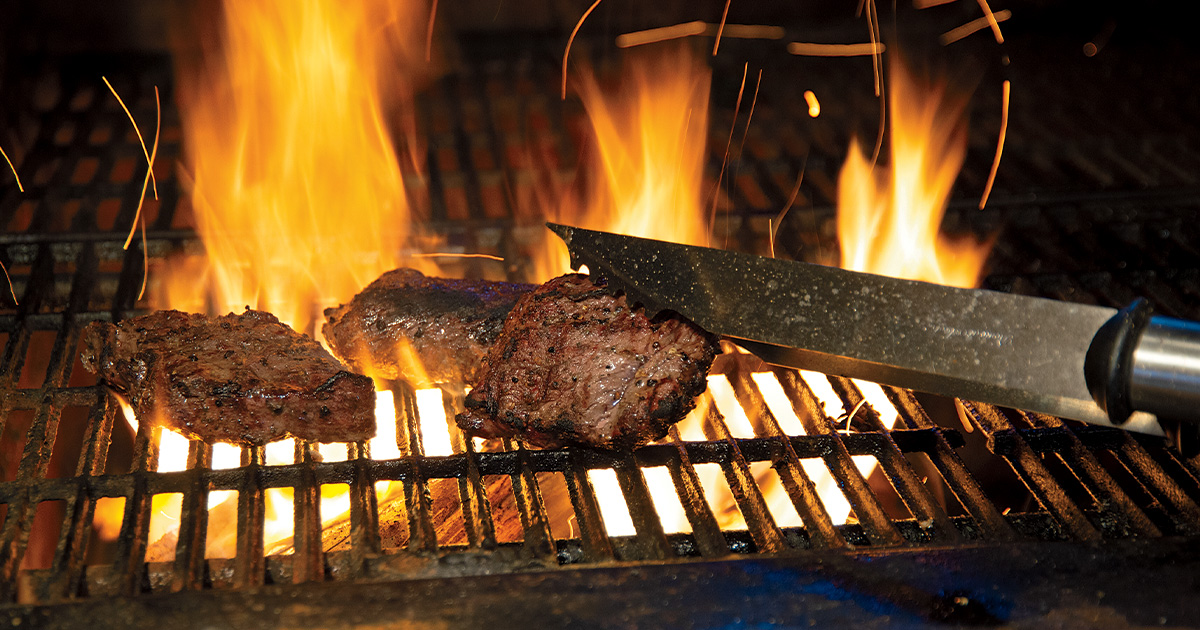
Duck breasts that have been brined, marinated, and grilled over a hot fire are hard to beat.
INGREDIENTS
DIRECTIONS
[STEP 1] Remove silver skin with a fillet knife, cut breasts into 1/4-inch strips across the grain, and trim off fat and any damaged pieces.
[STEP 2] Mix the remaining ingredients in a resealable plastic bag. Add meat strips to the bag and marinate 3 to 4 hours. If you go longer than 24 hours, the meat will get very salty.
[STEP 3] Remove the strips from the bag and grill them over high heat on a gas grill about 3 minutes per side, flipping once. The goal is medium rare, with grill marks. The sugar in the marinade will tend to burn a bit along the edges even with the quick cook, but don’t worry, that’s the way it should be.
Ducks Unlimited uses cookies to enhance your browsing experience, optimize site functionality, analyze traffic, and deliver personalized advertising through third parties. By continuing to use this site, you agree to our use of cookies. View Privacy Policy